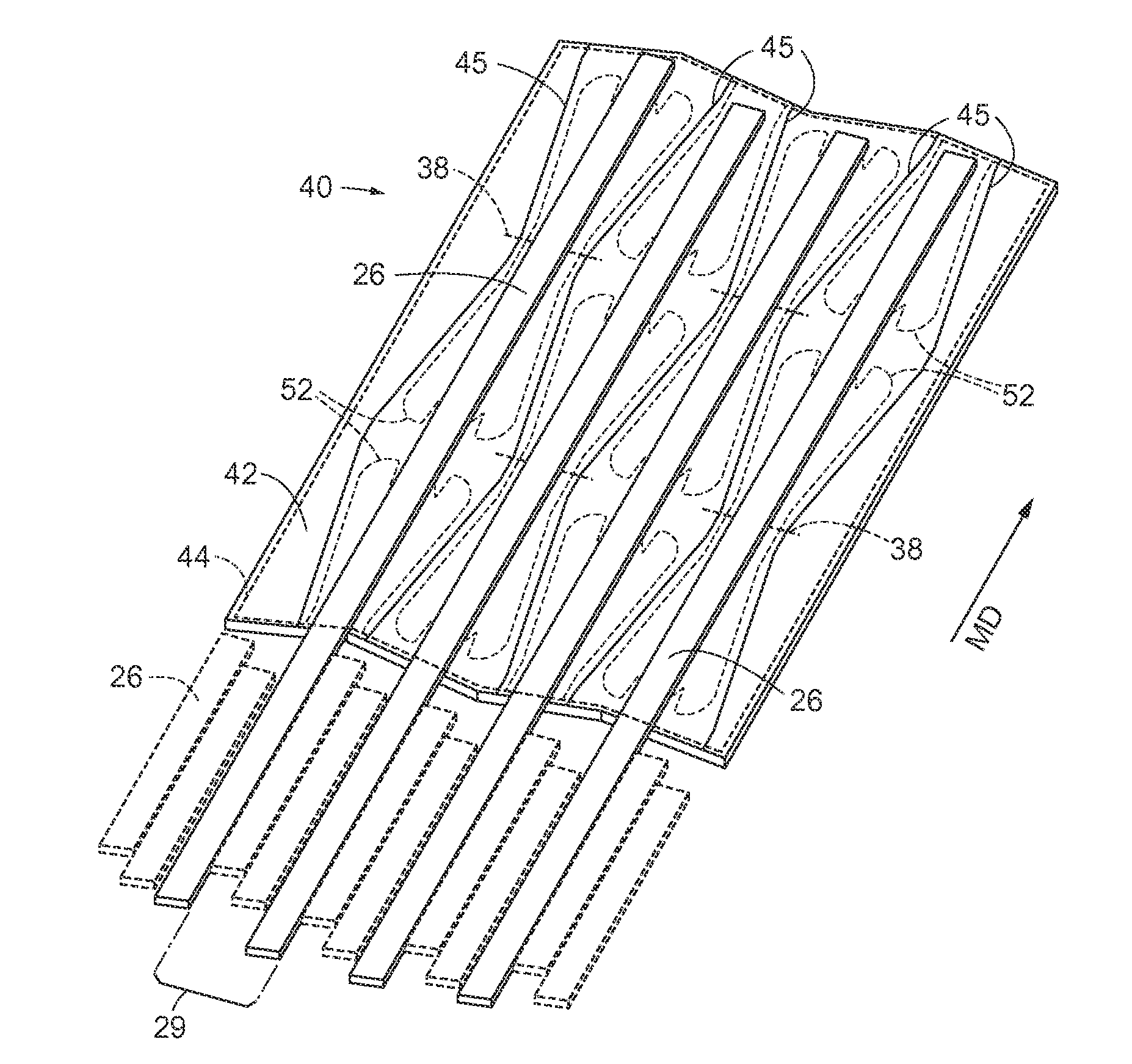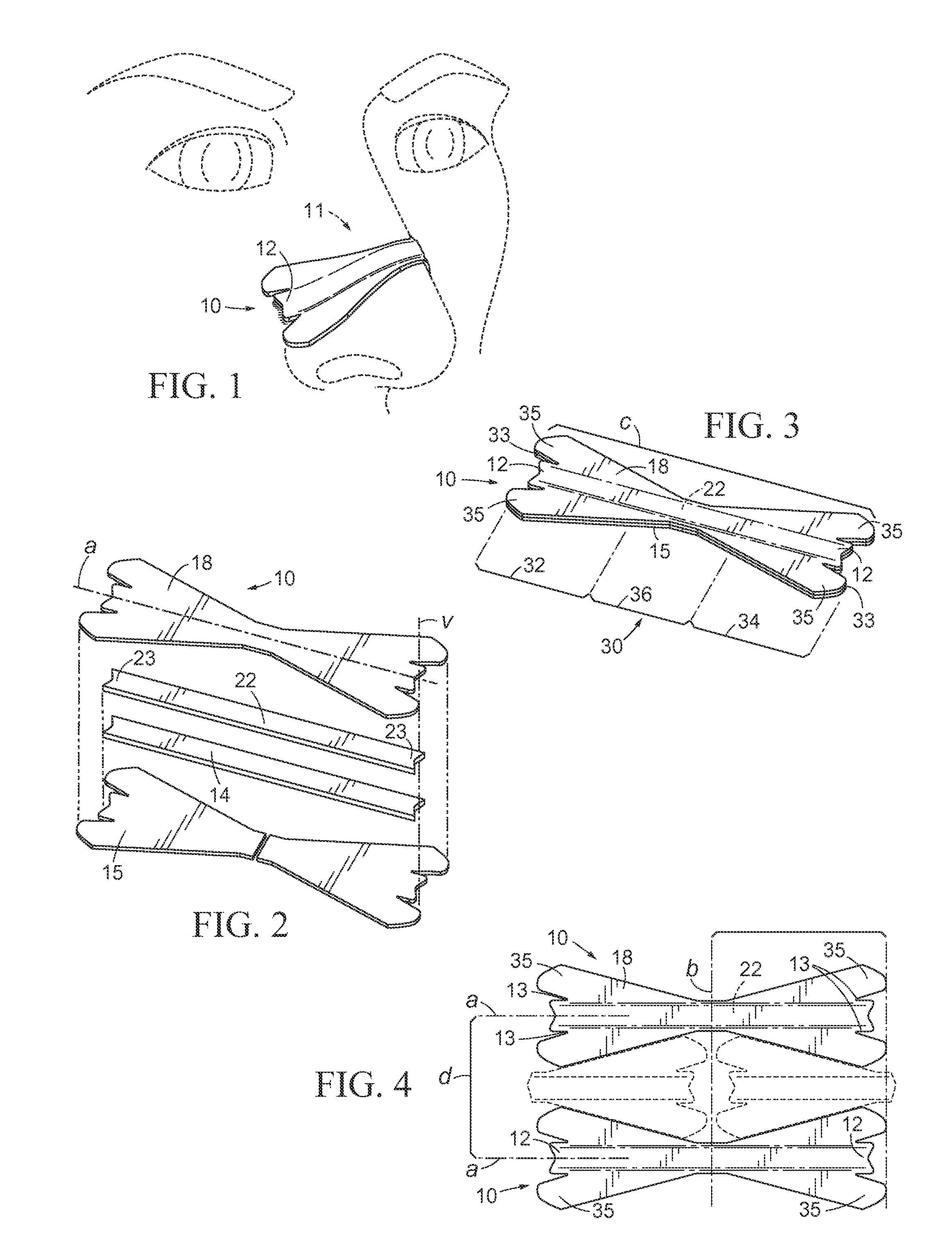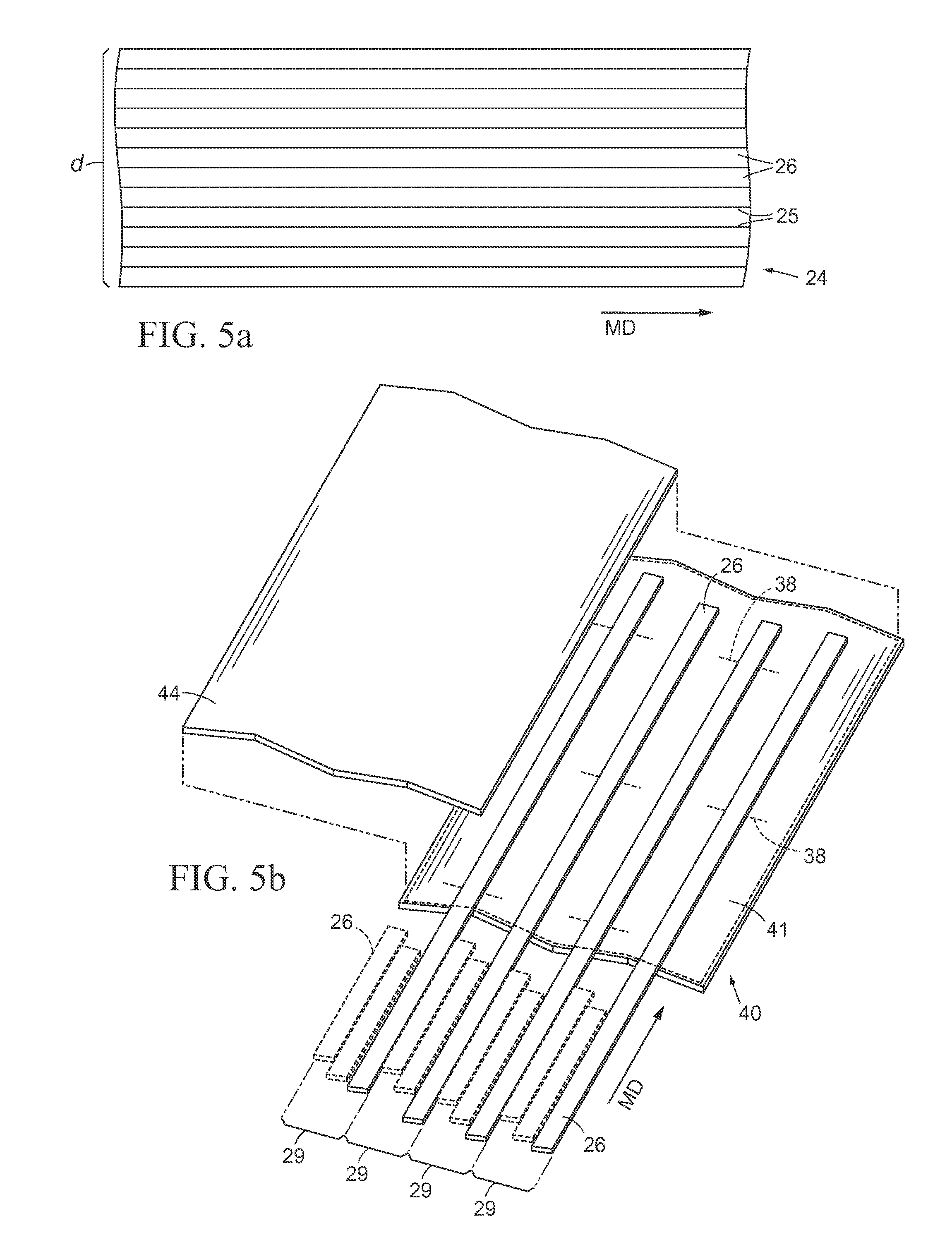Nasal dilator and methods of fabricating medical devices
a technology of nasal dilators and medical devices, applied in the field of nasal dilators and methods of fabricating medical devices, can solve the problems of nasal passage malformation, sleep disturbance, irregularities and general discomfort, and achieve the effects of reducing manufacturing costs, easy removal, and little or no stress
- Summary
- Abstract
- Description
- Claims
- Application Information
AI Technical Summary
Benefits of technology
Problems solved by technology
Method used
Image
Examples
Embodiment Construction
[0103]An embodiment of a nasal dilator, 10, in accordance with the present invention is illustrated in FIG. 1. Seen in use, dilator 10 is affixed by its engagement element to a nose, 11, illustrated as a portion of a human face. Dilator 10 includes a directional element in the form of a horizontal protrusion, 12, which separates slightly from the skin thereat as a result of the device's functional element applying spring biasing forces to the nasal wall tissues when dilator 10 is flexed across the bridge of the nose.
[0104]FIG. 2 shows that dilator 10 comprises a laminate of vertically stacked layers, indicated by a broken line, v, the layers including: a base layer comprising at least one base member, 14, a resilient layer comprising at least one resilient member, 22, and a cover layer comprising at least one cover member, 18. A base, resilient or cover member may further include one or more components as part thereof. Portions of one layer may overlap another layer. A protective la...
PUM
| Property | Measurement | Unit |
|---|---|---|
| width | aaaaa | aaaaa |
| widths | aaaaa | aaaaa |
| thickness | aaaaa | aaaaa |
Abstract
Description
Claims
Application Information
 Login to View More
Login to View More - R&D
- Intellectual Property
- Life Sciences
- Materials
- Tech Scout
- Unparalleled Data Quality
- Higher Quality Content
- 60% Fewer Hallucinations
Browse by: Latest US Patents, China's latest patents, Technical Efficacy Thesaurus, Application Domain, Technology Topic, Popular Technical Reports.
© 2025 PatSnap. All rights reserved.Legal|Privacy policy|Modern Slavery Act Transparency Statement|Sitemap|About US| Contact US: help@patsnap.com



